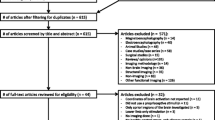Abstract
It has been shown that the primary and secondary somatosensory cortex, as well as the supplementary motor area (SMA), are involved in central processing of proprioceptive signals during passive and active arm movements. However, it is not clear whether different cortical areas are involved in processing of different proprioceptive inputs (skin, joint, muscle receptors), what their relative contributions might be, where kinesthetic sensations are formed within the CNS, and how they interact when the full peripheral proprioceptive machinery acts. In this study we investigated the representation of the brain structures involved in the perception of passive limb movement and illusory movement generated by muscle tendon vibration. Changes in cortical activity as indicated by changes in regional cerebral blood flow (rCBF) were measured using positron emission tomography (PET). Twelve subjects were studied under four conditions: (1) passive flexion-extension movement (PM) of the left forearm; (2) induced illusions of movements (VI) similar to the real PM, induced by alternating vibration of biceps and triceps tendons (70–80 Hz) at the elbow; (3) alternating vibration of biceps and triceps tendons (with 20–50 Hz) without induced kinesthetic illusions (VN); and (4) rest condition (RE). The results show different patterns of cortex activation. In general, the activation during passive movement was higher in comparison with both kinds of vibration, and activation during vibrations with induced illusions of movement was more prominent than during vibrations without induced illusions. When the PM condition was contrasted with the other conditions we found the following areas of activation – the primary motor (MI) and somatosensory area (SI), the SMA and the supplementary somatosensory area (SSA). In conditions where passive movements and illusory movements were contrasted with rest, some temporal areas, namely primary and associative auditory cortex, were activated, as well as secondary somatosensory cortex (SII). Our data show that different proprioceptive inputs, which induce sensation of movement, are associated with differently located activation patterns in the SI/MI and SMA areas of the cortex. In general, the comparison of activation intensities under different functional conditions indicates the involvement of SII in stimulus perception generation and of the SI/MI and SMA areas in the processing of proprioceptive input. Activation of the primary and secondary auditory cortex might reflect the interaction between somatosensory and auditory systems in movement sense generation. SSA might also be involved in movement sense generation and/or maintenance.
Similar content being viewed by others
Author information
Authors and Affiliations
Corresponding author
Rights and permissions
About this article
Cite this article
Radovanovic, S., Korotkov, A., Ljubisavljevic, M. et al. Comparison of brain activity during different types of proprioceptive inputs: a positron emission tomography study. Exp Brain Res 143, 276–285 (2002). https://doi.org/10.1007/s00221-001-0994-4
Received:
Accepted:
Published:
Issue Date:
DOI: https://doi.org/10.1007/s00221-001-0994-4




